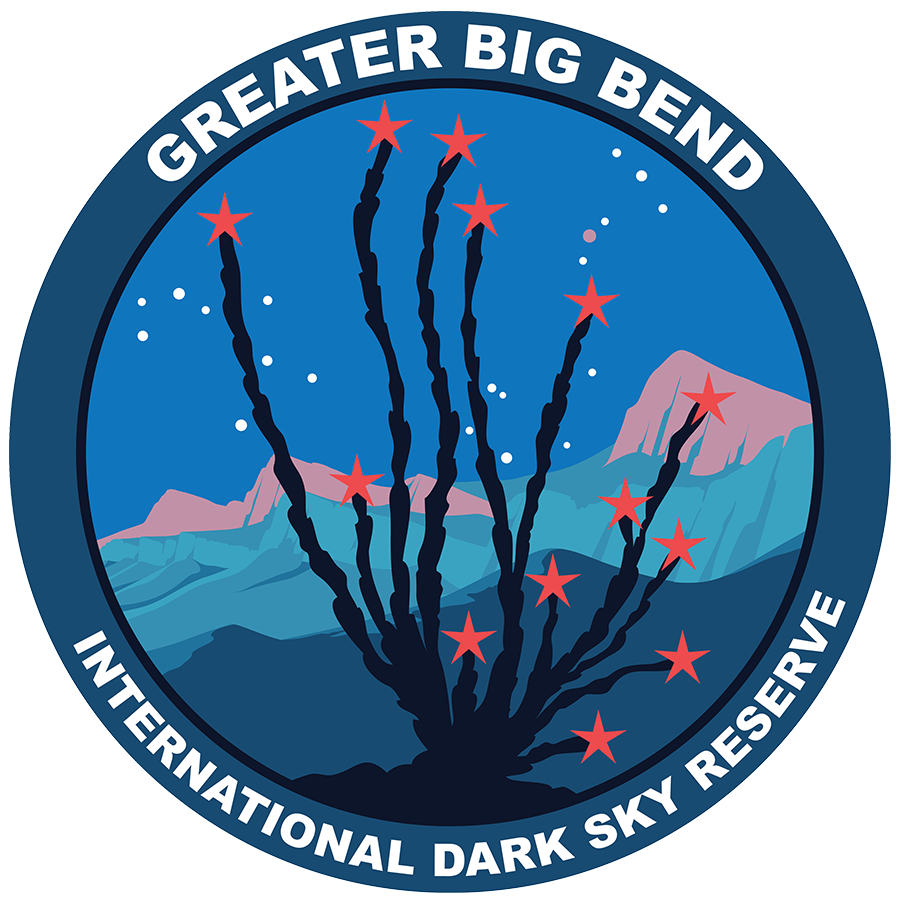Are Big Bend Stars Getting Outshined?
Terlingua and Study Butte as seen from Sotol Vista in Big Bend National Park.
Originally published in the Alpine Avalanche, July 13, 2022.
By Shawna Graves
Stephen Hummel, the Dark Skies Senior Outreach Program coordinator with McDonald Observatory, takes annual night sky measurements throughout the greater Big Bend to track changes in light pollution. The latest results show that Terlingua is getting brighter.
Measurements are made with a scientific grade camera using a process developed by the National Park Service to produce imagery called all-sky photometry.
Multiple images are taken on location, such as from Sotol Vista in Big Bend National Park, at night when there is no moonlight. The resulting images are stitched together using computer software, and show a wide-angle view of the skyline and night sky. The image shows all sources of light, including starlight, the Milky Way, and artificial light.
The observatory is interested in changes in artificial light, so they use mathematical equations to subtract the natural sources of light from the imagery, leaving only artificial light sources behind. The brightness of the artificial light and the brightness of the natural light is compared using a ratio called the All-Sky Light Pollution Ratio. This equation results in a number that is used to describe light pollution.
“It’s pretty complicated,” admitted Hummel, and the process takes a few days to complete from start to finish.
Hummel takes these measurements at McDonald Observatory every couple of months, and he visits the same locations throughout the International Dark Sky Reserve at least once a year.
“We have the most data sets of any location in the world,” Hummel said.
The most recent All-Sky Light Pollution Ratio for McDonald Observatory was 0.31, meaning the night sky is 31% brighter than a perfectly dark night sky there.
At one time, perfectly dark skies were measured in the Big Bend. In 2003 at Sotol Vista in the national park, the ALR was 0.03, or 3% brighter than a perfectly dark sky. Anything below 5% is statistically the same as zero, making the night skies of 2003 as dark as they get.
The view from Sotol Vista receives light coming from the Terlingua and Study Butte areas. This raised concerns when the most recent measurements showed an ALR of 0.11, or 11%, brighter than a perfectly dark night sky, and nearly four times greater than its 2003 measurements.
“The gentle haze is sky glow that was not detectable in 2003,” Hummel said.
Light accumulation causes skyglow to extend vertically higher, so the more unshielded lights there are in an area, the greater the effect will be. Considerate night lighting is especially important in the Big Bend.
“Sightlines are endless here. Once a light leaves a light bulb, it just keeps going and going. There’s nothing to block it,” Hummel said.
Light shields and amber-toned, low intensity lights can help turn the tide.
Even so, Big Bend National Park remains the darkest national park in the Lower 48, Hummel noted.


